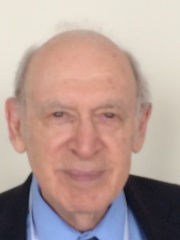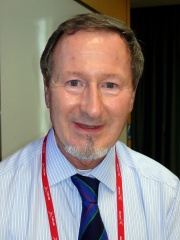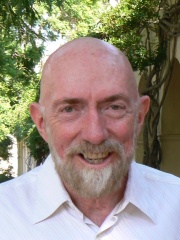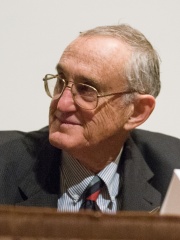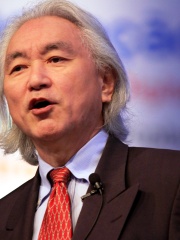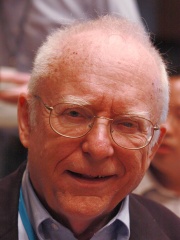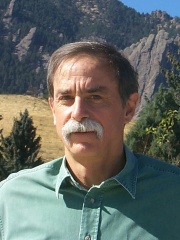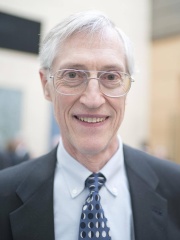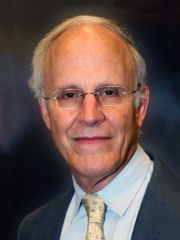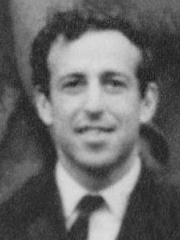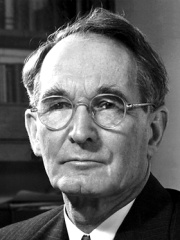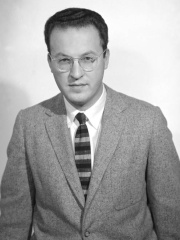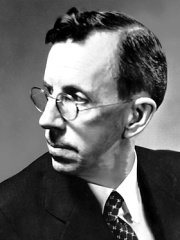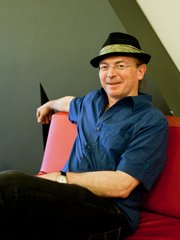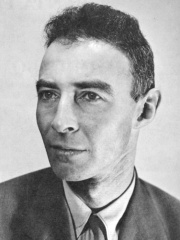
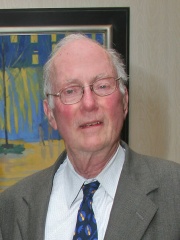
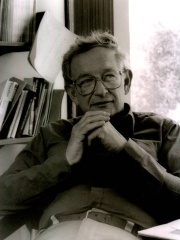
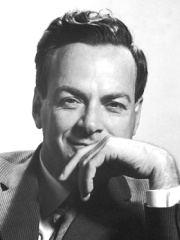
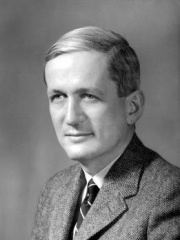
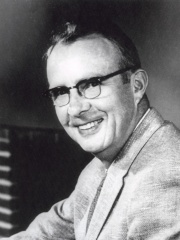
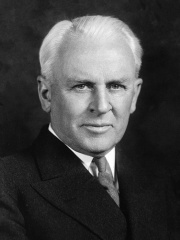
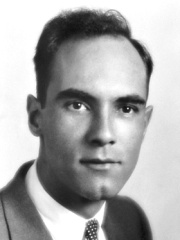
The Most Famous
PHYSICISTS from United States
This page contains a list of the greatest American Physicists. The pantheon dataset contains 851 Physicists, 208 of which were born in United States. This makes United States the birth place of the most number of Physicists.
Top 10
The following people are considered by Pantheon to be the top 10 most legendary American Physicists of all time. This list of famous American Physicists is sorted by HPI (Historical Popularity Index), a metric that aggregates information on a biography's online popularity. Visit the rankings page to view the entire list of American Physicists.

1. J. Robert Oppenheimer (1904 - 1967)
With an HPI of 90.85, J. Robert Oppenheimer is the most famous American Physicist. His biography has been translated into 101 different languages on wikipedia.
J. Robert Oppenheimer (born Julius Robert Oppenheimer OP-ən-hy-mər; April 22, 1904 – February 18, 1967) was an American theoretical physicist who served as the director of the Manhattan Project's Los Alamos Laboratory during World War II. He is often called the "father of the atomic bomb" for his role in overseeing the development of the first nuclear weapons. Born in New York City, Oppenheimer obtained a degree in chemistry from Harvard University in 1925 and a doctorate in physics from the University of Göttingen in Germany in 1927, studying under Max Born. After research at other institutions, he joined the physics faculty at the University of California, Berkeley, where he was made a full professor in 1936. Oppenheimer made significant contributions to physics in the fields of quantum mechanics and nuclear physics, including the Born–Oppenheimer approximation for molecular wave functions; work on the theory of positrons, quantum electrodynamics, and quantum field theory; and the Oppenheimer–Phillips process in nuclear fusion. With his students, he also made major contributions to astrophysics, including the theory of cosmic ray showers, and the theory of neutron stars and black holes. In 1941, Oppenheimer was briefed about nuclear weapon design by Australian physicist Mark Oliphant. In 1942, Oppenheimer was recruited to work on the Manhattan Project, and in 1943 was appointed director of the project's Los Alamos Laboratory in New Mexico, tasked with developing the first nuclear weapons. His leadership and scientific expertise were instrumental in the project's success, and on July 16, 1945, he was present at the first test of the atomic bomb, Trinity. In August, the weapons were used on Japan in the atomic bombings of Hiroshima and Nagasaki, to date the only uses of nuclear weapons in conflict. In 1947, Oppenheimer was appointed director of the Institute for Advanced Study in Princeton, New Jersey, and chairman of the General Advisory Committee of the new United States Atomic Energy Commission (AEC). He lobbied for international control of nuclear power and weapons in order to avert an arms race with the Soviet Union, and later opposed the development of the hydrogen bomb, partly on ethical grounds. During the Second Red Scare, his stances, together with his past associations with the Communist Party USA, led to an AEC security hearing in 1954 and the revocation of his security clearance. He continued to lecture, write, and work in physics, and in 1963 received the Enrico Fermi Award for contributions to theoretical physics. The 1954 decision was vacated in 2022.

2. Charles H. Townes (1915 - 2015)
With an HPI of 80.63, Charles H. Townes is the 2nd most famous American Physicist. His biography has been translated into 75 different languages.
Charles Hard Townes (July 28, 1915 – January 27, 2015) was an American physicist. Townes worked on the theory and application of the maser, for which he obtained the fundamental patent, and other work in quantum electronics associated with both maser and laser devices. He shared the 1964 Nobel Prize in Physics with Nikolay Basov and Alexander Prokhorov. Townes was an adviser to the United States Government, meeting every US president from Harry S. Truman (1945) to Bill Clinton (1999). He directed the US government's Science and Technology Advisory Committee for the Apollo lunar landing program. After becoming a professor of the University of California, Berkeley in 1967, he began an astrophysical program that produced several important discoveries, for example, the black hole at the center of the Milky Way galaxy. Townes was religious and believed that science and religion are converging to provide a greater understanding of the nature and purpose of the universe.

3. Philip Warren Anderson (1923 - 2020)
With an HPI of 79.35, Philip Warren Anderson is the 3rd most famous American Physicist. His biography has been translated into 67 different languages.
Philip Warren Anderson (December 13, 1923 – March 29, 2020) was an American theoretical physicist who shared the 1977 Nobel Prize in Physics with Nevill Mott and John Van Vleck "for their fundamental theoretical investigations of the electronic structure of magnetic and disordered systems." Anderson made contributions to the theories of localization, antiferromagnetism, symmetry breaking (including a paper in 1962 discussing symmetry breaking in particle physics, leading to the development of the Standard Model around 10 years later), and high-temperature superconductivity, and to the philosophy of science through his writings on emergent phenomena. He is also responsible for naming the field of physics that is now known as condensed matter physics.

4. Richard Feynman (1918 - 1988)
With an HPI of 78.55, Richard Feynman is the 4th most famous American Physicist. His biography has been translated into 112 different languages.
Richard Phillips Feynman (; May 11, 1918 – February 15, 1988) was an American theoretical physicist. He is best known for his work in the path integral formulation of quantum mechanics, the theory of quantum electrodynamics, the physics of the superfluidity of supercooled liquid helium, and in particle physics, for which he proposed the parton model. For his contributions to the development of quantum electrodynamics, Feynman received the Nobel Prize in Physics in 1965 jointly with Julian Schwinger and Shin'ichirō Tomonaga. Feynman developed a pictorial representation scheme for the mathematical expressions describing the behavior of subatomic particles, which later became known as Feynman diagrams and is widely used. During his lifetime, Feynman became one of the best-known scientists in the world. In a 1999 poll of 130 leading physicists worldwide by the British journal Physics World, he was ranked the seventh-greatest physicist of all time. He assisted in the development of the atomic bomb during World War II and became known to the wider public in the 1980s as a member of the Rogers Commission, the panel that investigated the Space Shuttle Challenger disaster. Along with his work in theoretical physics, Feynman has been credited with having pioneered the field of quantum computing and introducing the concept of nanotechnology. He held the Richard C. Tolman professorship in theoretical physics at the California Institute of Technology. Feynman was a keen popularizer of physics through both books and lectures, including a talk on top-down nanotechnology, "There's Plenty of Room at the Bottom" (1959) and the three-volumes of his undergraduate lectures, The Feynman Lectures on Physics (1961–1964). He delivered lectures for lay audiences, recorded in The Character of Physical Law (1965) and QED: The Strange Theory of Light and Matter (1985). Feynman also became known through Ralph Leighton's collections of his anecdotes, Surely You're Joking, Mr. Feynman! (1985) and What Do You Care What Other People Think? (1988), and a book Leighton wrote about him entitled Tuva or Bust!. He also became known through the biography Genius: The Life and Science of Richard Feynman by James Gleick.
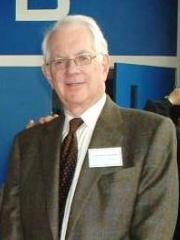
5. Sheldon Lee Glashow (b. 1932)
With an HPI of 78.53, Sheldon Lee Glashow is the 5th most famous American Physicist. His biography has been translated into 67 different languages.
Sheldon Lee Glashow (US: , UK: ; born December 5, 1932) is a Nobel Prize-winning American theoretical physicist. He is the Metcalf Professor of Mathematics and Physics at Boston University, and a Eugene Higgins Professor of Physics, emeritus, at Harvard University. Glashow is a member of the board of sponsors for the Bulletin of the Atomic Scientists.

6. Norman Foster Ramsey Jr. (1915 - 2011)
With an HPI of 77.88, Norman Foster Ramsey Jr. is the 6th most famous American Physicist. His biography has been translated into 62 different languages.
Norman Foster Ramsey Jr. (August 27, 1915 – November 4, 2011) was an American physicist who was awarded the 1989 Nobel Prize in Physics for the invention of the separated oscillatory field method (see Ramsey interferometry), which had important applications in the construction of atomic clocks. A physics professor at Harvard University for most of his career, Ramsey also held several posts with such government and international agencies as NATO and the United States Atomic Energy Commission. Among his other accomplishments are helping to found the United States Department of Energy's Brookhaven National Laboratory and Fermilab.

7. Luis Walter Alvarez (1911 - 1988)
With an HPI of 76.99, Luis Walter Alvarez is the 7th most famous American Physicist. His biography has been translated into 74 different languages.
Luis Walter Alvarez (June 13, 1911 – September 1, 1988) was an American experimental physicist, inventor, and professor who was awarded the Nobel Prize in Physics in 1968 for his discovery of resonance states in particle physics using the hydrogen bubble chamber. In 2007 the American Journal of Physics commented, "Luis Alvarez was one of the most brilliant and productive experimental physicists of the twentieth century." After receiving his PhD from the University of Chicago in 1936, Alvarez went to work for Ernest Lawrence at the Radiation Laboratory at the University of California, Berkeley. Alvarez devised a set of experiments to observe K-electron capture in radioactive nuclei, predicted by the beta decay theory but never before observed. He produced tritium using the cyclotron and measured its lifetime. In collaboration with Felix Bloch, he measured the magnetic moment of the neutron. In 1940, Alvarez joined the MIT Radiation Laboratory, where he contributed to a number of World War II radar projects, from early improvements to Identification friend or foe (IFF) radar beacons, now called transponders, to a system known as VIXEN for preventing enemy submarines from realizing that they had been found by the new airborne microwave radars. The radar system for which Alvarez is best known and which has played a major role in aviation, most particularly in the post war Berlin airlift, was Ground Controlled Approach (GCA). Alvarez spent a few months at the University of Chicago working on nuclear reactors for Enrico Fermi before coming to Los Alamos to work for Robert Oppenheimer on the Manhattan Project. Alvarez worked on the design of explosive lenses, and the development of exploding-bridgewire detonators. As a member of Project Alberta, he observed the Trinity nuclear test from a B-29 Superfortress, and later the bombing of Hiroshima from the B-29 The Great Artiste. After the war Alvarez was involved in the design of a liquid hydrogen bubble chamber that allowed his team to take millions of photographs of particle interactions, develop complex computer systems to measure and analyze these interactions, and discover entire families of new particles and resonance states. This work resulted in his being awarded the Nobel Prize in 1968. He was involved in a project to x-ray the Egyptian pyramids to search for unknown chambers. With his son, geologist Walter Alvarez, he developed the Alvarez hypothesis which proposes that the extinction event that wiped out the non-avian dinosaurs was the result of an asteroid impact.

8. Robert Andrews Millikan (1868 - 1953)
With an HPI of 76.61, Robert Andrews Millikan is the 8th most famous American Physicist. His biography has been translated into 93 different languages.
Robert Andrews Millikan (March 22, 1868 – December 19, 1953) was an American experimental physicist who received the Nobel Prize in Physics in 1923 "for his work on the elementary charge of electricity and on the photoelectric effect." As Chairman of the Executive Council of Caltech (the school's governing body at the time) from 1921 to 1945, Millikan helped to turn the school into one of the leading research institutions in the United States. He also served on the board of trustees for Science Service, now known as Society for Science & the Public, from 1921 to 1953.

9. Carl David Anderson (1905 - 1991)
With an HPI of 76.33, Carl David Anderson is the 9th most famous American Physicist. His biography has been translated into 81 different languages.
Carl David Anderson (September 3, 1905 – January 11, 1991) was an American experimental physicist who shared the 1936 Nobel Prize in Physics with Victor Hess for his discovery of the positron, which confirmed the existence of antimatter.
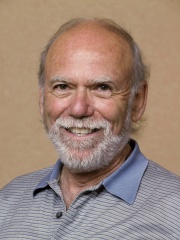
10. Barry Barish (b. 1936)
With an HPI of 76.20, Barry Barish is the 10th most famous American Physicist. His biography has been translated into 56 different languages.
Barry Clark Barish (born January 27, 1936) is an American experimental physicist and Nobel Laureate. He is a Linde Professor of Physics, emeritus at California Institute of Technology and a leading expert on gravitational waves. In 2017, Barish was awarded the Nobel Prize in Physics along with Rainer Weiss and Kip Thorne "for decisive contributions to the LIGO detector and the observation of gravitational waves". He said, "I didn't know if I would succeed. I was afraid I would fail, but because I tried, I had a breakthrough." In 2018, he joined the faculty at University of California, Riverside, becoming the university's second Nobel Prize winner on the faculty. In the fall of 2023, he joined Stony Brook University as the inaugural President's Distinguished Endowed Chair in Physics. In 2023, Barish was awarded the National Medal of Science by President Biden in a White House ceremony.
People
Pantheon has 208 people classified as American physicists born between 1753 and 2000. Of these 208, 61 (29.33%) of them are still alive today. The most famous living American physicists include Sheldon Lee Glashow, Barry Barish, and Jerome Isaac Friedman. The most famous deceased American physicists include J. Robert Oppenheimer, Charles H. Townes, and Philip Warren Anderson. As of April 2024, 3 new American physicists have been added to Pantheon including Robin Canup, Seth Lloyd, and Angela Belcher.
Living American Physicists
Go to all RankingsSheldon Lee Glashow
1932 - Present
HPI: 78.53
Barry Barish
1936 - Present
HPI: 76.20
Jerome Isaac Friedman
1930 - Present
HPI: 72.21
Douglas Osheroff
1945 - Present
HPI: 72.03
Hugh David Politzer
1949 - Present
HPI: 71.88
Kip Thorne
1940 - Present
HPI: 71.68
David Lee
1931 - Present
HPI: 71.41
Michio Kaku
1947 - Present
HPI: 71.01
John L. Hall
1934 - Present
HPI: 69.65
David J. Wineland
1944 - Present
HPI: 68.96
John C. Mather
1946 - Present
HPI: 68.88
David Gross
1941 - Present
HPI: 68.57
Deceased American Physicists
Go to all RankingsJ. Robert Oppenheimer
1904 - 1967
HPI: 90.85
Charles H. Townes
1915 - 2015
HPI: 80.63
Philip Warren Anderson
1923 - 2020
HPI: 79.35
Richard Feynman
1918 - 1988
HPI: 78.55
Norman Foster Ramsey Jr.
1915 - 2011
HPI: 77.88
Luis Walter Alvarez
1911 - 1988
HPI: 76.99
Robert Andrews Millikan
1868 - 1953
HPI: 76.61
Carl David Anderson
1905 - 1991
HPI: 76.33
Ben Roy Mottelson
1926 - 2022
HPI: 76.12
Percy Williams Bridgman
1882 - 1961
HPI: 76.05
Donald A. Glaser
1926 - 2013
HPI: 75.85
Clinton Davisson
1881 - 1958
HPI: 75.46
Newly Added American Physicists (2025)
Go to all RankingsOverlapping Lives
Which Physicists were alive at the same time? This visualization shows the lifespans of the 25 most globally memorable Physicists since 1700.

